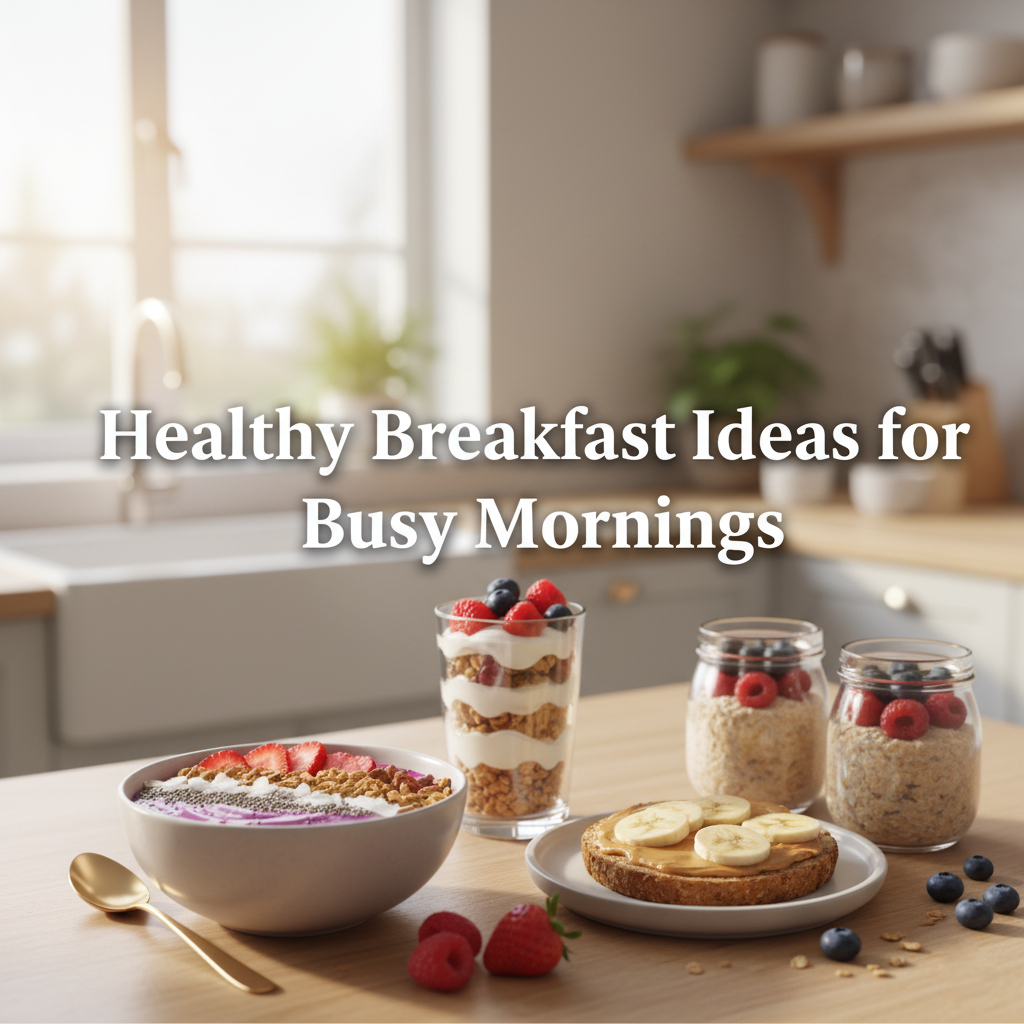When it comes to eating well, everything starts at the grocery store. If your fridge and pantry are stocked with wholesome, nutrient-rich ingredients, cooking healthy meals becomes simple even enjoyable. On the other hand, if you fill your kitchen with processed snacks and sugary treats, you’ll be more tempted to reach for them when hunger strikes.
That’s why having a solid healthy grocery list is so important. This guide will walk you through a complete clean eating shopping list organized by category so you can shop smarter, save time, and fuel your body with the right foods.
At the end, we’ve also included a downloadable PDF version you can keep on your phone or print for your weekly shopping trips.
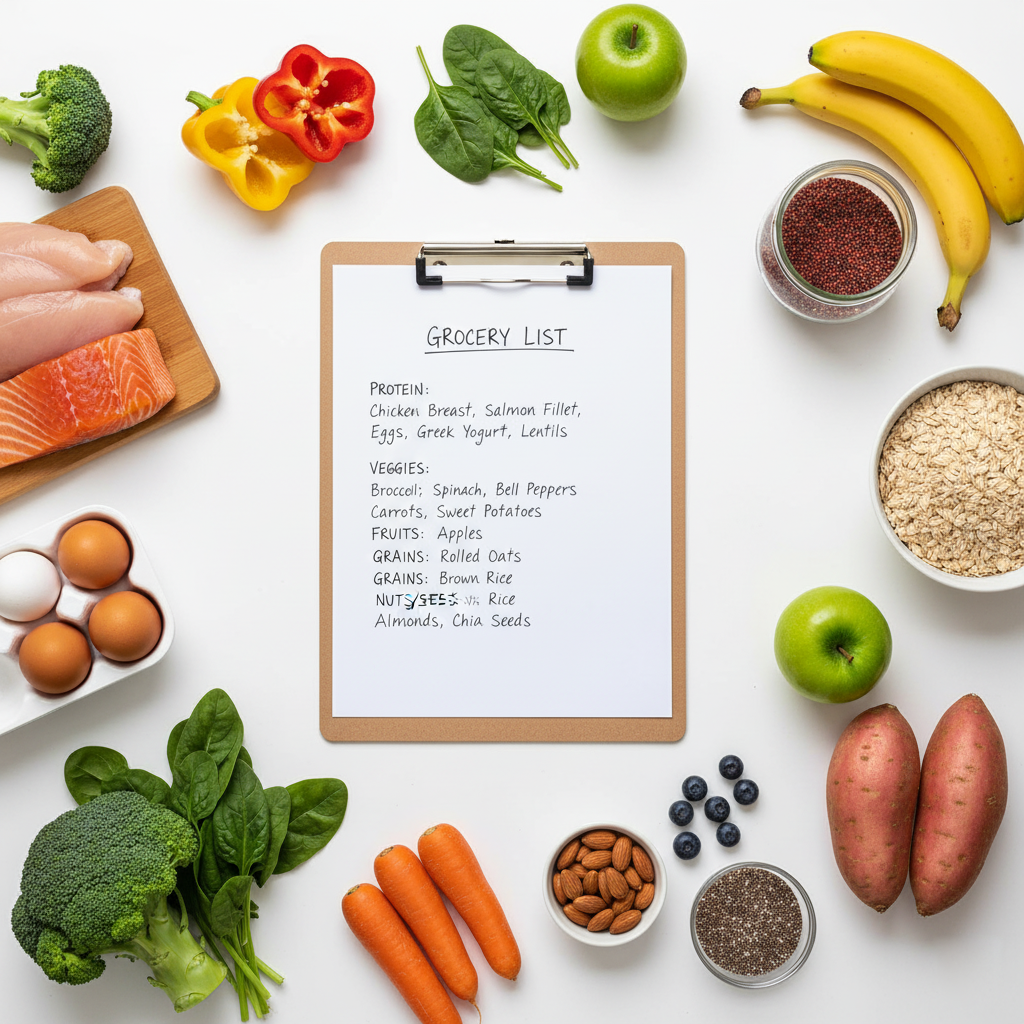
🔹 Why a Healthy Grocery List Matters
✅ Saves time: No more wandering the aisles wondering what’s healthy.
✅ Prevents impulse buys: Less temptation from junk food.
✅ Supports weight management: Nutrient-dense foods keep you full longer.
✅ Makes meal prep easier: You’ll always have the right ingredients ready.
Think of this list as the foundation for your weekly meals a simple way to make healthy eating consistent and stress-free.
🔹 Healthy Grocery List by Category
1. Proteins (Lean & Plant-Based)
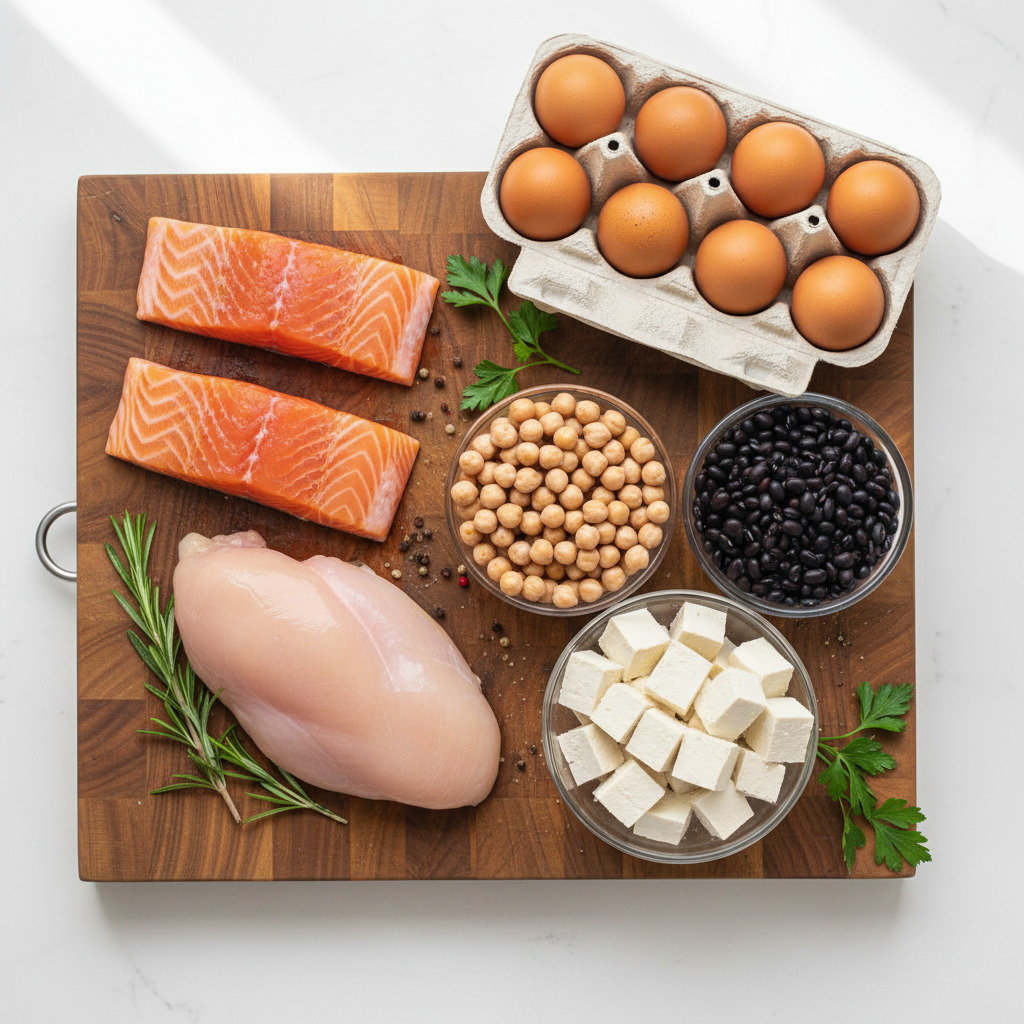
Protein is essential for muscle repair, energy, and satiety. Aim for a mix of lean animal and plant-based options:
- Chicken breast, turkey breast
- Salmon, tuna, sardines, white fish
- Eggs and egg whites
- Lentils, chickpeas, black beans, kidney beans
- Tofu, tempeh, edamame
- Greek yogurt, cottage cheese
- Lean beef (in moderation)
💡 Tip: Variety is key — rotate between animal and plant proteins.
2. Whole Grains & Carbs
Carbs fuel your body, but focus on complex carbs that digest slowly and keep blood sugar steady:
- Brown rice, quinoa, bulgur, farro
- Whole wheat pasta
- Rolled oats or steel-cut oats
- Sweet potatoes
- Whole grain bread or wraps
- Barley, millet
💡 Tip: Avoid heavily processed white bread, sugary cereals, and instant noodles.
3. Fruits (Fresh or Frozen)

Fruits add natural sweetness, vitamins, antioxidants, and fiber:
- Apples, bananas, pears
- Berries: strawberries, blueberries, raspberries
- Oranges, tangerines, grapefruit
- Grapes, kiwi, pineapple
- Mangoes, papayas
- Frozen fruit bags (perfect for smoothies)
💡 Tip: Stick to whole fruits instead of juices for extra fiber.
4. Vegetables (Fresh or Frozen)
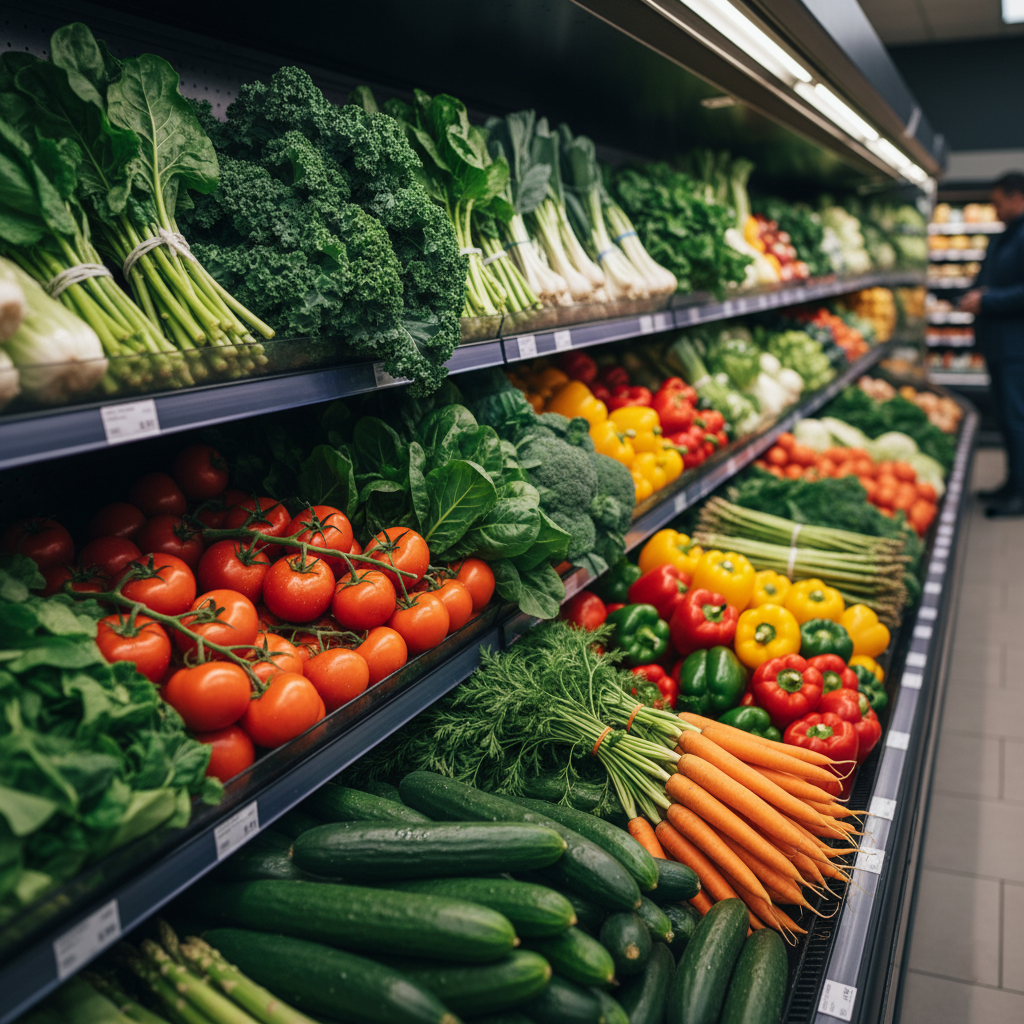
Vegetables are the star of any clean eating list full of vitamins, minerals, and antioxidants:
- Leafy greens: spinach, kale, arugula, lettuce
- Cruciferous veggies: broccoli, cauliflower, cabbage, Brussels sprouts
- Root veggies: carrots, beets, radishes
- Bell peppers, cucumbers, zucchini, eggplant
- Tomatoes, mushrooms, onions, garlic
- Frozen mixed vegetables (great for quick meals)
💡 Tip: Aim for a “rainbow plate” — different colors = different nutrients.
5. Healthy Fats
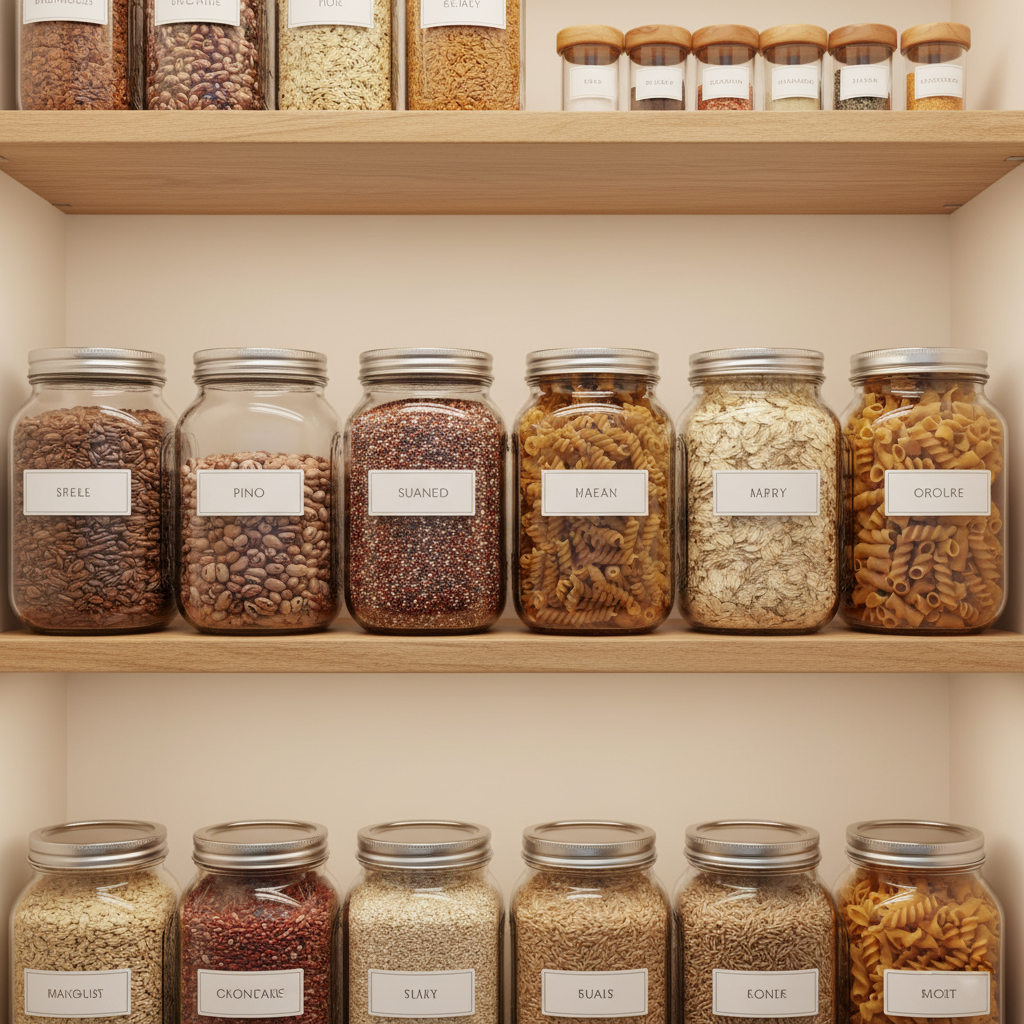
Not all fats are bad. Healthy fats support brain function, hormones, and energy:
- Avocados
- Olive oil, avocado oil, coconut oil
- Nuts: almonds, walnuts, cashews, pistachios
- Seeds: chia, flax, sunflower, pumpkin, sesame
- Natural nut butters (no added sugar)
- Fatty fish: salmon, sardines
💡 Tip: Use nuts and seeds as snacks or salad toppings.
6. Dairy & Alternatives
Choose nutrient-rich dairy or plant-based options:
- Low-fat milk, almond milk, oat milk, soy milk
- Greek yogurt (unsweetened)
- Cottage cheese
- Hard cheeses (in moderation)
💡 Tip: Watch out for flavored yogurts and sweetened plant milks they often hide added sugar.

7. Pantry Staples & Condiments
These help you cook delicious, healthy meals:
- Olive oil (extra virgin)
- Apple cider vinegar, balsamic vinegar
- Low-sodium soy sauce or tamari
- Canned beans, chickpeas, lentils
- Canned tuna or salmon
- Herbs & spices: turmeric, cumin, paprika, cinnamon, oregano, garlic powder
- Low-sodium vegetable or chicken broth
- Mustard, salsa, hot sauce
💡 Tip: Spices and herbs can make simple meals taste amazing without extra calories.
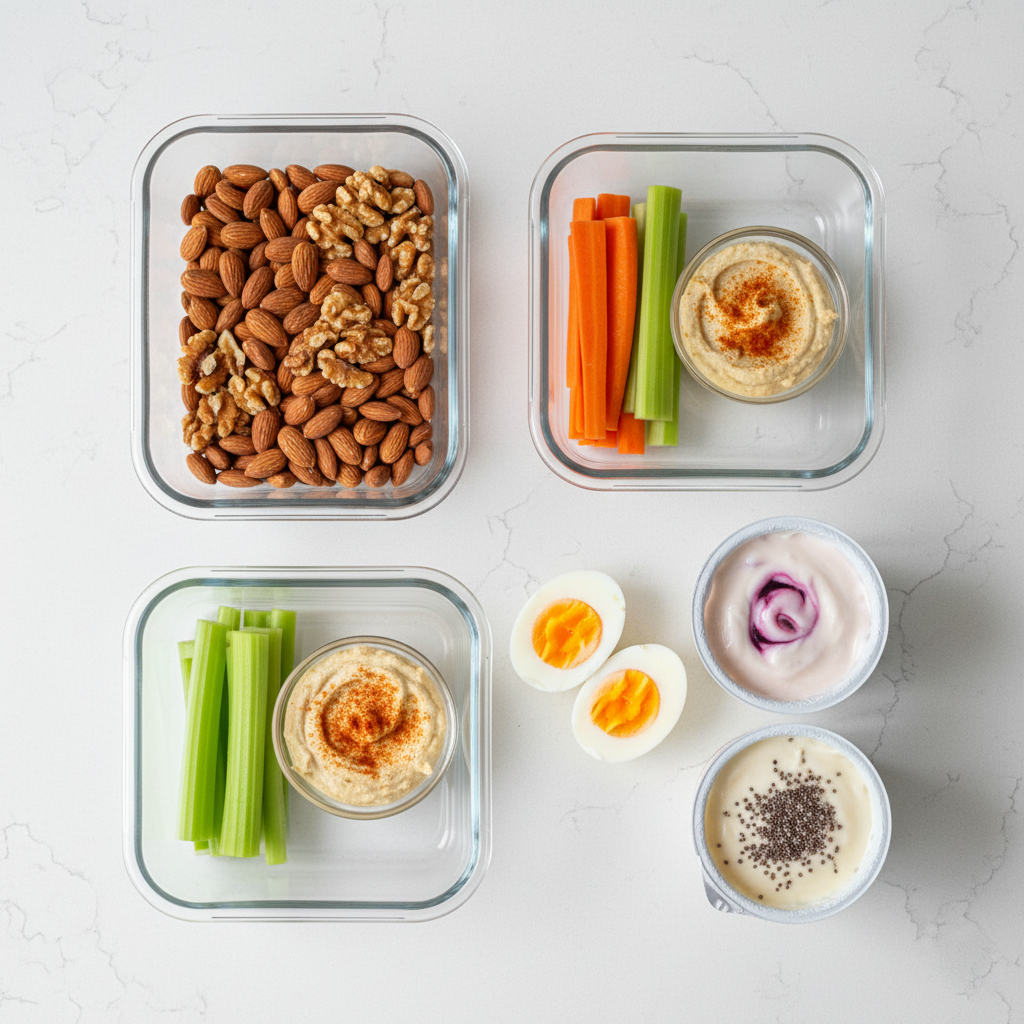
8. Snacks & Quick Options
Healthy snacking is possible — keep these on hand:
- Rice cakes, whole-grain crackers
- Hummus with veggie sticks
- Air-popped popcorn
- Dark chocolate (70% or higher)
- Protein bars (low sugar)
- Trail mix (unsalted nuts + dried fruit)
💡 Tip: Always have a healthy snack on hand to curb cravings.
🔹 How to Build Your Weekly Healthy Grocery List
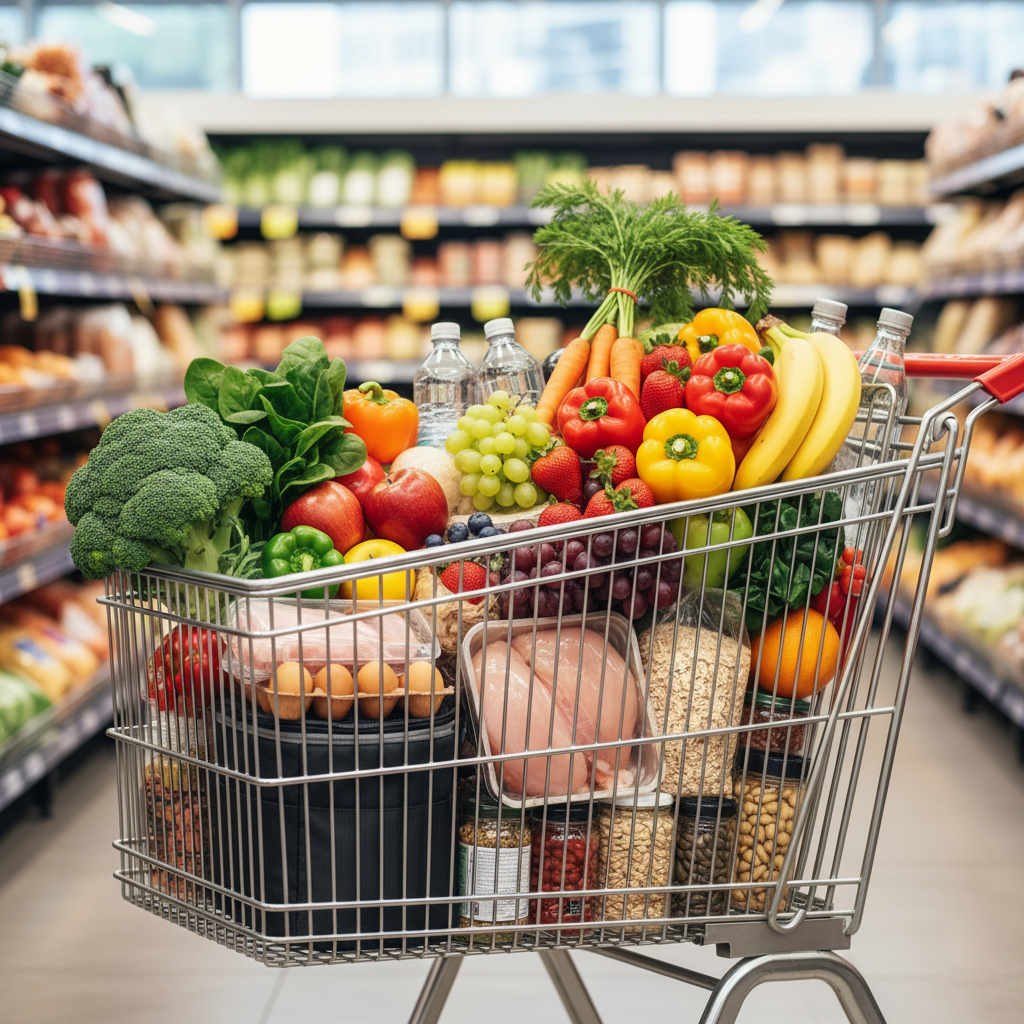
- Plan your meals first: Choose 3–4 main dishes and snacks.
- Organize by category: Proteins, carbs, vegetables, etc.
- Shop the perimeter: Fresh foods are usually around the edges of the store; processed foods in the middle aisles.
- Buy in bulk where possible: Rice, oats, beans, and frozen veggies save money.
- Stick to your list: Avoid impulse buys like chips, soda, and sugary snacks.
🔹 Sample 1-Week Grocery List

✅ Proteins: 2 chicken breasts, 1 pack tofu, 6 eggs, 2 cans tuna
✅ Carbs: 1 pack quinoa, 2 sweet potatoes, 1 loaf whole grain bread
✅ Veggies: spinach, broccoli, carrots, cucumbers, bell peppers
✅ Fruits: bananas, apples, berries (fresh or frozen)
✅ Fats: 1 avocado, olive oil, almonds
✅ Dairy/Alternatives: Greek yogurt, almond milk
✅ Snacks: hummus, rice cakes, dark chocolate
👉 With these ingredients, you can easily make healthy meals like quinoa salads, chicken stir-fry, overnight oats, and smoothie bowls.
🥗 Final Thoughts
Following a healthy grocery list is one of the simplest ways to stay on track with your diet. By focusing on whole foods like lean proteins, complex carbs, vegetables, fruits, and healthy fats, you’ll always have what you need to prepare clean, nourishing meals at home.
👉 Next time you hit the store, bring this list along and skip the processed junk your body (and wallet) will thank you!
#HealthyGroceryList #CleanEating #HealthyDiet #NutritionTips #HealthyLifestyle #GroceryShopping #HealthyLiving #HealthyFoodIdeas #WeeklyGroceryList #EatClean
FAQ Section
1. What should be included in a healthy grocery list?
A healthy grocery list should include fresh fruits and vegetables, lean proteins, whole grains, nuts, seeds, and low-fat dairy. Focus on unprocessed, nutrient-rich items that support long-term health.
2. How can I make grocery shopping healthier?
Plan your meals before shopping, stick to the outer aisles of the store (where fresh foods are), and avoid buying processed snacks. Always read nutrition labels for added sugars or sodium.
3. Is it cheaper to eat healthy?
Yes, with smart planning. Buying seasonal produce, bulk grains, and frozen fruits can make healthy eating affordable and reduce waste.
4. What are the best protein foods to buy?
Opt for lean meats like chicken or turkey, plant-based proteins such as lentils, beans, and tofu, and fish rich in omega-3 fatty acids like salmon or tuna.
5. How often should I update my grocery list?
Update your list weekly based on meal plans and seasonal items. Keeping a digital list helps track staples and prevents overbuying or missing essentials.
